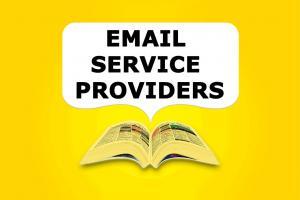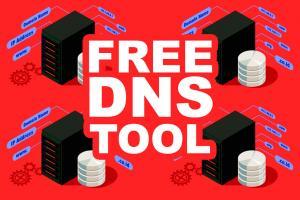CRM
Sales tracking gives you an overview of key sales metrics . That way, you can maximize your sales performance . Loads of customer data, spreadsheets, confusing dashboards, and zero actionable insights — this is what sales tracking looks like for many companies. But it doesn’t have to be that way in 2024. Today, there are many types of sales tracking solutions to help you harness your sales data. Don’t know where to start? This guide will help you add sales tracking to your CRM sales management strategy. What is sales tracking? Sales tracking is the process of collecting and analyzing data throughout your sales funnel. It involves monitoring multiple aspects of the sales process, including how prospects flow through the pipeline, sales cycle length, sales rep performance, etc. The more data you have at your disposal, the better equipped you’ll be to make informed decisions that drive sales success. 5
It’s important to drive potential customers through the lead lifecycle . But how do you do it? Lead management is the answer. Lead management goes far beyond capturing leads and reaching them with email campaigns. To convert leads, you need to be strategic at each stage of the customer journey. In this guide, we’ll share everything you need to know to set up an effective lead management process and move your leads down the sales funnel. What is lead management? Lead management is the process of systematically acquiring, tracking, and qualifying potential customers (a.k.a. leads). The ultimate goal is to turn these leads into paying customers. 5 Stages of lead management There are five stages in the lead management process: lead generation, lead segmentation, lead nurturing, lead scoring, and lead distribution. 1. Lead generation Lead generation is the process of attracting potential customers. The goal is to gather their contact
Sales automation is a great way to drive results — all while saving time and resources. In fact, automation should be a key part of your CRM sales management strategy. Most deals take around five follow-ups to close. The more leads in your pipeline, the faster you’ll get bogged down in repetitive tasks. This keeps you from closing deals and building lasting customer relationships. Want to learn more? The article will go over sales automation, examples, and the best tools for your business. What is sales automation? Sales automation is the use of technology to streamline and automate repetitive or time-consuming workflows within the sales process. Automation aims to minimize, or even eliminate, manual tasks. These include data entry, email outreach, and follow-ups. It can also be used for more complex sales tasks like lead scoring and routing. Benefits of sales automation Sales automation doesn’t just save time — it actively
Sales funnels are key to driving conversion rates and growing your business. This article will answer the following questions: what is a sales funnel and how can you create one? Your sales funnel might not convert 100% of people who come across your brand. However, it can increase your chances of converting those who are genuinely interested. Read on to discover the benefits of sales funnels, find sales funnel examples, and learn how to build one for your business. What is a sales funnel? A sales funnel is a visual model that outlines the stages a customer goes through on their way to a purchase. As customer journeys are often non-linear, the goal of a sales funnel is to shorten the path to purchase. That’s because it creates a predictable flow of interactions, guiding the customer toward a decision. Why are sales funnels important? Most businesses benefit from having a
Summary Personalized and targeted email marketing campaigns are essential to drive conversions and maximize the value of every customer interaction. To personalize effectively, businesses need high-quality customer data. Brevo CDP offers a robust solution to unify, enrich, and sync customer data, empowering businesses to extract actionable insights and leverage smart segments to improve the customer journey. In this article, we’ll go over pre-defined segments based on CDP scores and explore retail scenarios to illustrate how Brevo CDP enhances email marketing conversion. Problem Improving your email marketing performance isn’t just about sending more emails. It’s about sending smarter campaigns. To achieve better conversion rates, marketers need to personalize their email marketing strategies with better targeting and optimized sending times. According to a McKinsey survey, personalization can boost ROI by 10-30% (as well as lower acquisition costs and improve revenue). Sending emails aligned perfectly to the customer journey not only provides a
Small-mid-sized companies can expect to spend anywhere between $10,000 to $100,000 per year on data analytics costs . The amount you will pay depends on the number of employees and your business needs . However, companies should set aside approximately 2-6% of their total budget for data analytics. Data analytics is no longer a thing for only large enterprises. Today, small and mid-sized businesses also generate a sizable amount of data. Business owners can gain helpful insight and make more informed decisions with data analytics. This post provides everything you need to know about data analytics costs for small and mid-sized companies. Read on to discover how much you’ll spend while optimizing your business. Data analytics costs should represent 2-6% of your expenses Most companies dedicate 2-6% of their total expenses to data analytics, including tools, salaries, and services. If a company has a revenue of approximately $2M, it would
Do you need a way to piece together scattered customer data without having to rely on IT teams to constantly track it all down? A customer data platform ( CDP ) is exactly that — a single source of truth of all your customer data and a game-changing tool for elevating your brand experience. Read along for an in-depth look at what customer data platforms are, how they work, and real-world use cases. Customer data platform definition A CDP is software that helps businesses centralize, organize, and analyze data, primarily zero and first-party data, about their customers. The data is then processed into unified customer profiles that can be used in other business systems and tools. The result is consistent data that is easily available to all teams. Customer data platform visualization Why do companies need a CDP? Customer data platforms come with a host of advantages, especially for customer
No reply to your cold emails? Trying to move the sales process forward without being too pushy? We have follow-up email templates to get you started. Write follow-ups for one-on-one use or automation workflows that’ll get results. The hard truth of the matter is that when starting out with follow-up emails, it will take time to build up a high response rate. But they’re still a necessary part of your email marketing strategy. Why? Because prospects aren’t always going to reach out to you on their own. And, your competitors are already doing it. In this article, we’ll cover follow-up email templates, examples, and tips so you can write a professional email that goes beyond “Just checking in,” and improve your email outreach. Sales follow-up email templates Below we cover templates for how to write an official follow-up email for common use cases so your prospects don’t fall through the
Distinguishing between CRM vs CDP can be tricky, especially since they both have to do with data management . While they have a lot in common and even work together to help businesses perform, they each have a separate purpose. What’s the difference between a CRM vs CDP? Customer relationship management (CRM) platforms and customer data platforms (CDP) both use customer data. CDPs consolidate data about customers from the entire business ecosystem and work to clean, analyze, and prepare data to be used by teams and in other business tools (like a CRM). CRMs , on the other hand, use data for customer-facing tasks, like creating and analyzing marketing campaigns and sales pipelines. If customer data platforms are the brains, then CRMs are like the hands. They act on the information and insights that the CDP provides. What is a CRM (customer relationship management) platform? CRM software helps businesses manage
Customer relationship management (CRM) typically refers to software used to help businesses manage data to improve sales and relationships. But with so many tools and features, software can quickly become overwhelming. That’s why we put together our CRM best practices for managing and growing your business. In this article, we outline the six pillars you should build your CRM strategy on. 6 CRM Best Practices From finding the right CRM to using all the features it has to offer, these CRM best practices will help you make the most of your system so you can scale your business. 1. Use CRM software Customers expect consistent communication across channels and departments. At the same time, customers engage with brands through many channels (think email, live chat, social media, etc), making it difficult for companies to meet those expectations. With only 22% of companies having unified customer experience (CX) data across departments














